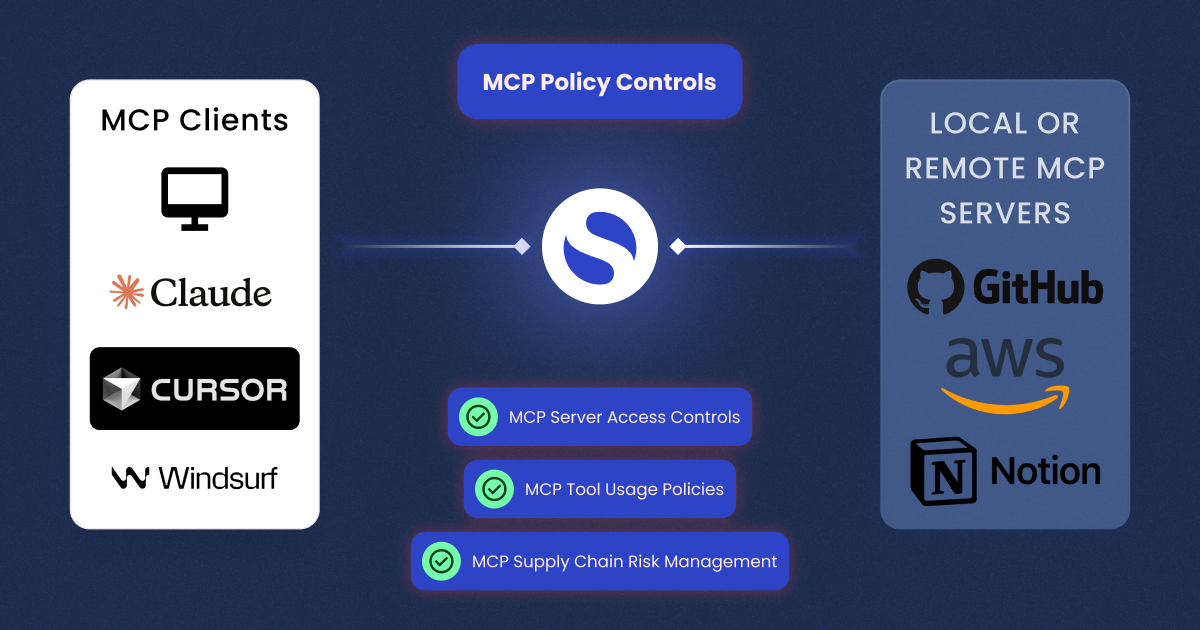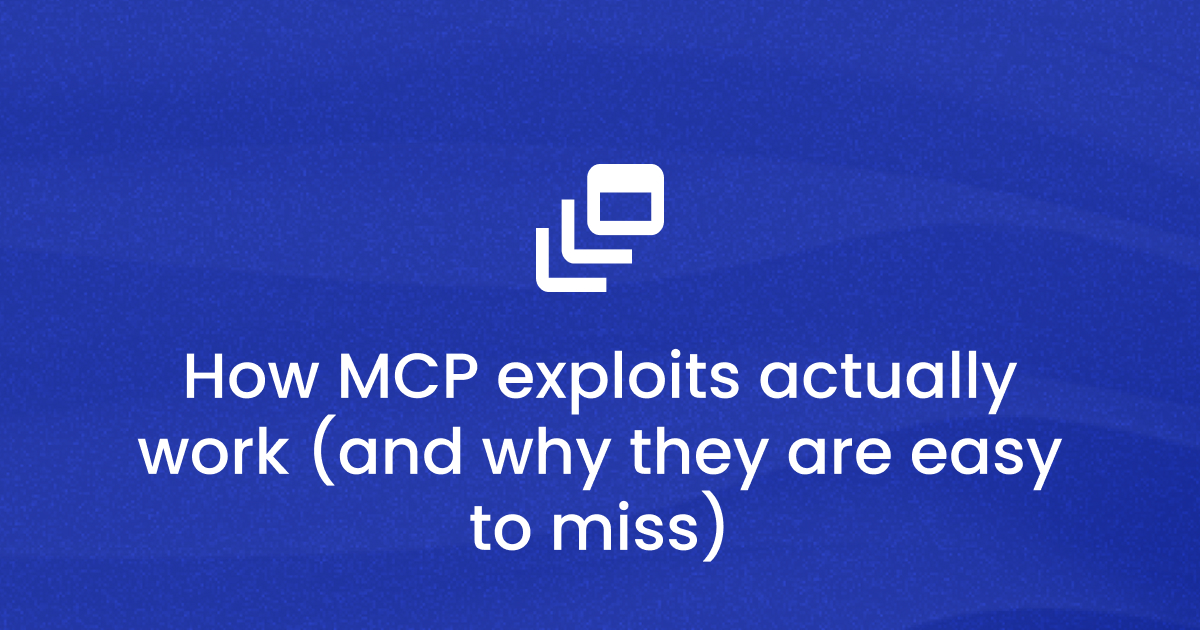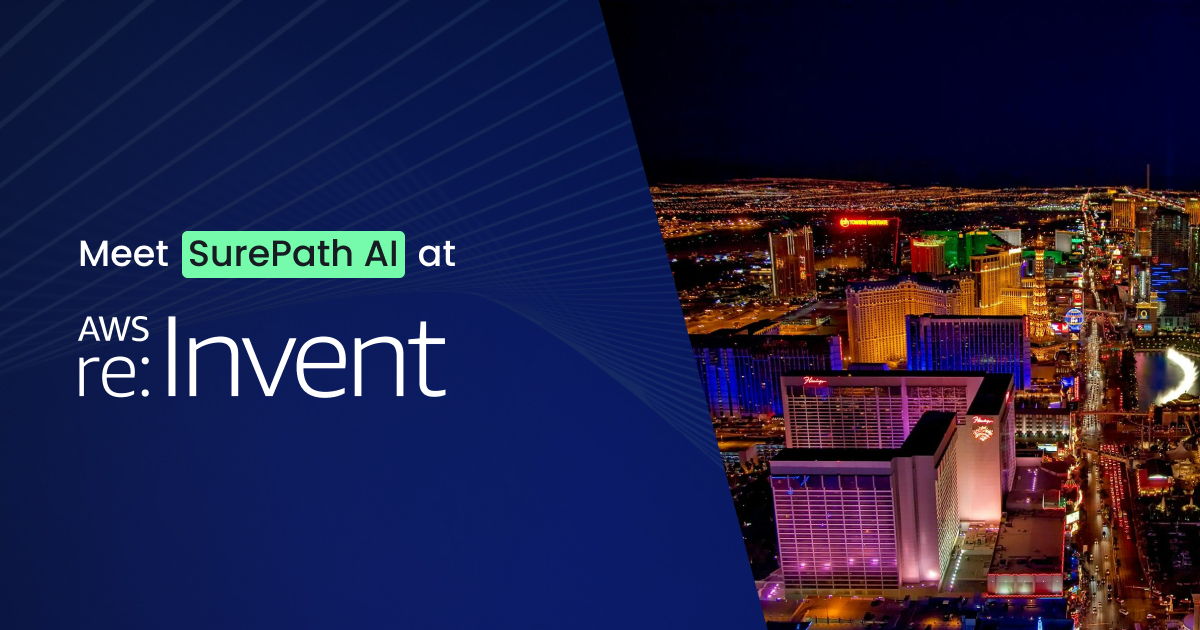Previewing what's next: a first look at MCP policy controls

SurePath AI now applies real-time policies to MCP traffic so you can govern AI actions, not just access.
Most organizations don’t fully know what Model Context Protocol (MCP) is. Let alone, the exposure and risks it creates in their environment.
MCP has gone from a buzz-acronym to the backbone in next-gen AI-powered workflows. The adoption has been faster than GenAI itself.
And with that speed, we’re seeing the same pattern we saw when ChatGPT first hit enterprises in 2022: rapid adoption, little-to-no oversight, and a surface-level understanding of all the risks.
The MCP protocol is powerful. But when poorly understood, it often results in easy misuse. And many users are leveraging MCP without even knowing it. So for now, most teams default to the same instinctive response: let’s block it all.
If ChatGPT (and Anthropic. and HuggingFace. and Claude. and DeepSeek. and…) taught us anything, it’s that you can’t stop shadow AI by shutting everything down (and you probably lack the tools to do so!). You also can’t ignore it. You need a path forward to enable safe adoption and that’s why we’re excited to preview a new feature built exactly for this moment.
Let’s dive into what MCP policy controls unlock and see how many times we can say “MCP” in a single blog. (Seriously, we’re counting...for our MCP jar.)
Why MCP has security teams at the edge of their seats
MCP isn't just a convenience layer, it’s a direct line from generative AI clients to the systems that run your business. These lightweight MCP “servers” can run locally on a user’s laptop often launched silently by AI desktop apps like ChatGPT, Claude, or Cursor and link to internal tools like Google Drive, Salesforce, or even your AWS administrative console.
That means AI isn’t just reading data anymore. It's now issuing real commands, authenticated as the end user. It’s editing records, provisioning infrastructure, and triggering actions across enterprise systems. The right (or wrong) prompt could wipe out production environments or flood external models with your sensitive internal content. And because Local MCP Servers often update automatically and run on user devices, the supply chain and impersonation risks are real and mounting.
Cloud-based MCP setups offer some guardrails but they also increase surface area. Multiple agents connected to a mix of Local and Remote MCP Servers creates tangled pathways for data sprawl and lateral movement.
Simply blocking MCPs isn’t a long-term answer. But allowing them without guardrails is a disaster waiting to happen. That’s why we’re previewing a new capability purpose-built to help organizations embrace this shift, safely.
Introducing MCP policy controls
SurePath AI was built exactly for this kind of challenge. The one where emerging AI protocols like MCP introduce real power and real risk at the same time. Sitting directly in the communication path between the MCP Host (the AI client) and its model “brain” in the cloud, we apply policy based control over what MCP Servers and tools are allowed to be used before anything is executed. Because we’re the only platform that’s schema-aware enough to transform these requests, we enforce your policies on exactly which MCP Servers and tools are allowed by controlling Local MCP Hosts and their connections to Local MCP Servers. These policies can leverage our built-in classifications of whether a tool is destructive or not, or be customized explicitly to your security requirements.
To mitigate risk on the remote side, SurePath AI maintains a catalog of known MCP Servers and endpoints. All protected MCP traffic is routed through SurePath, where access controls are applied in real time - even down to the specific tool. We also uncover supply chain threats, detecting when MCP tools are being impersonated or attempting to exfiltrate data outside your approved security perimeter.

And this is just the start. We have more coming soon, like MCP Server support inside our private model portal, unlocking powerful agentic outcomes under enterprise-grade guardrails, using your own models and data in your own private cloud. Of course, the more we build, the more we say “MCP.” So if you made it this far, congratulations: you’ve survived what is now officially 33 mentions of MCP in a single blog. (Told you we’re counting because yes, our MCP jar is real.)
At the end of the day, blocking MCP isn’t the answer. But letting it run wild? Even worse. That’s why we built the control plane for securing every AI interaction and why we’re so excited to offer early access to our new MCP policy controls.
Want to see the MCP policy controls in action? Schedule a demo and see if your organization is eligible for early access here.
Related articles





